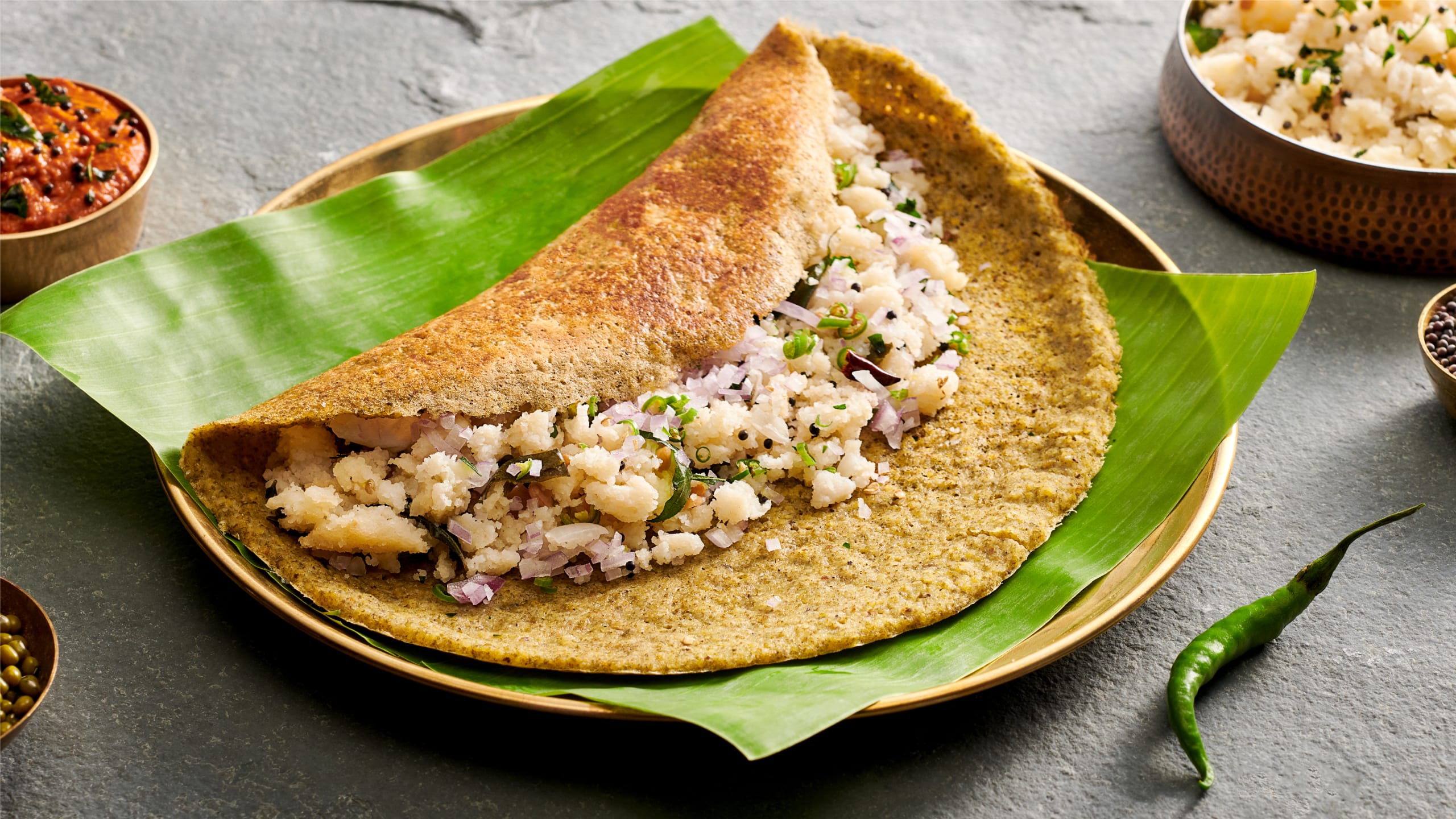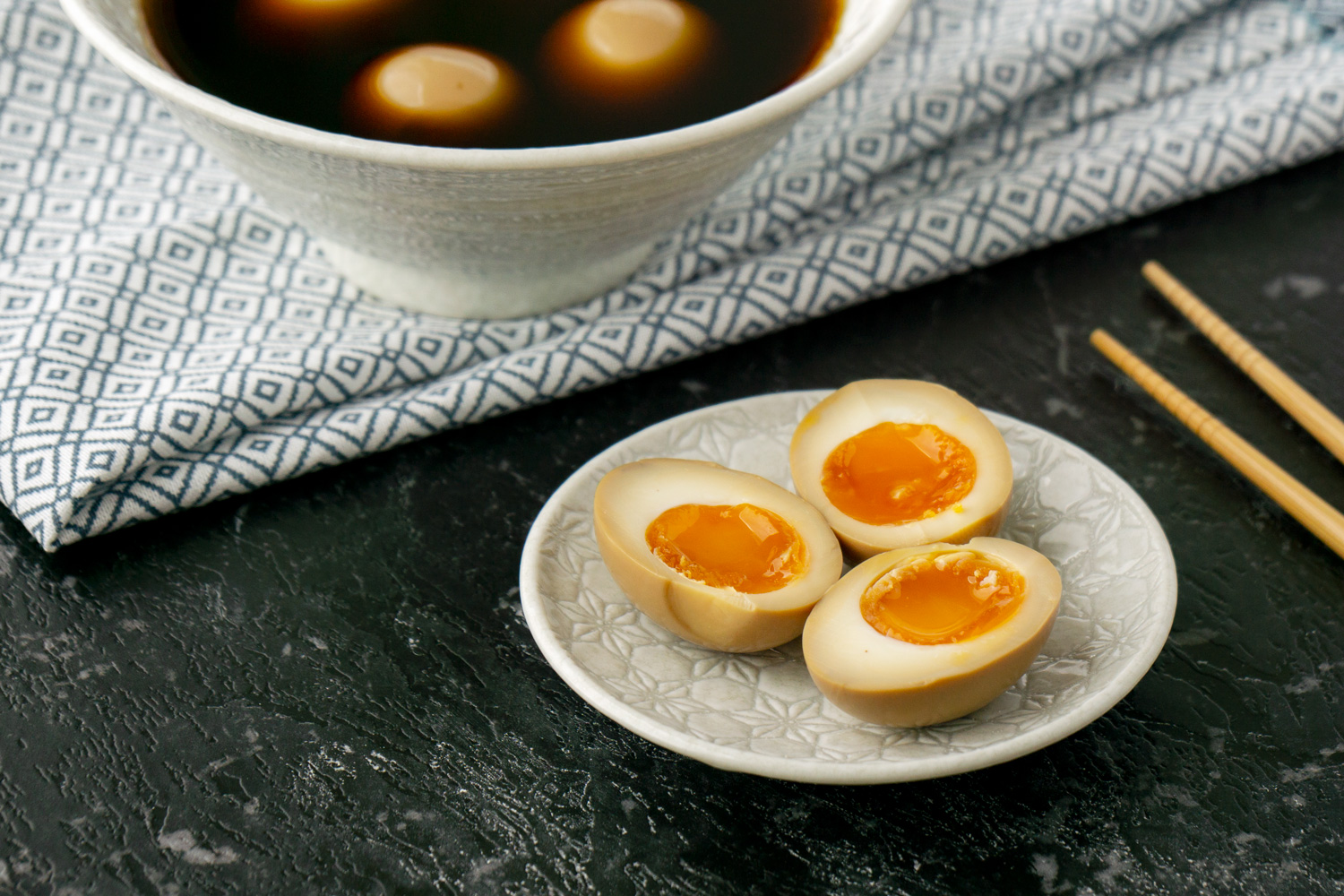Welcome to a world of vibrant flavors and irresistible aromas, where tradition meets innovation in every bite. Pesarattu, a beloved dish from the heart of Telugu cuisine, is a culinary gem that has captured the appetites of millions. Made from green gram, also known as moong dal, these delectable crepes are a favorite breakfast or brunch option in many Telugu households.
Packed with nutrients and bursting with flavor, pesarattu is not only a treat for your taste buds but also a healthy choice. Its key ingredient, green gram, is loaded with protein, fiber, and essential vitamins and minerals. Paired with a tangy ginger chutney or traditional coconut chutney, this dish takes your culinary experience to new heights.
Whether you’re a food enthusiast or just curious to explore the diverse flavors of Indian cuisine, pesarattu is a must-try. With its unique texture and delicate balance of oppatoto spices, it’s no wonder that this dish has gained recognition beyond the borders of Telugu-speaking regions.
Join us as we dive into the rich history and irresistible allure of pesarattu, and discover why it has become a staple in Telugu cuisine. Get ready to tantalize your senses and embark on a culinary adventure like no other.
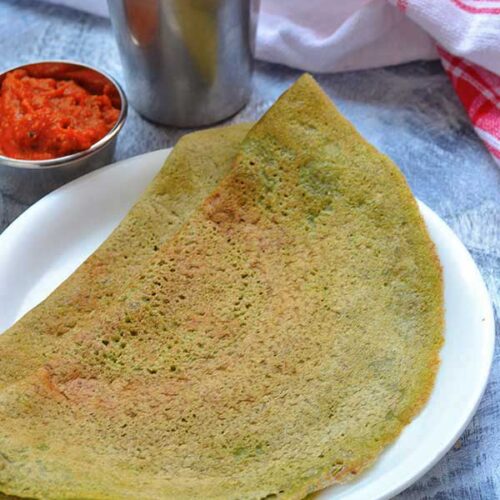
History and Cultural Significance of Pesarattu
Pesarattu has deep roots in the culinary traditions of Andhra Pradesh and Telangana, two regions where this dish is cherished not only as a meal but also as a cultural symbol. The use of green gram dates back centuries and is intertwined with the agricultural practices of these regions. As a versatile legume, moong dal has been a staple in the diets of the local populace, providing essential nutrition to farmers and laborers who required energy for their demanding lifestyles.
Historically, pesarattu was often prepared during festivals, family gatherings, and special occasions. It is not merely a breakfast item but a dish that embodies hospitality and warmth. Offering pesarattu to guests is a way of expressing goodwill and sharing the rich culinary heritage of the Telugu-speaking people. This dish has also adapted over time, reflecting the influences of different regions while maintaining its core identity.
The cultural significance of pesarattu extends beyond its ingredients and preparation. It represents the communal spirit of Telugu cuisine, where families gather to cook and share meals together. This dish is often accompanied by stories, laughter, and a sense of belonging, creating cherished memories that are passed down through generations. As you enjoy pesarattu, you partake in a culinary tradition that honors the past while embracing the future.
Ingredients and Preparation of Green Gram Crepe
The core ingredient of Green Gram Crepe is green gram, which is soaked overnight to soften and enhance its digestibility. This preparation step is crucial as it helps in achieving the perfect consistency for the batter. Along with green gram, other ingredients typically include rice, ginger, green chilies, and a pinch of salt. Some variations also incorporate spices like cumin and coriander for added flavor. The combination of these ingredients results in a nutritious and aromatic batter that forms the base of the crepes.
To prepare pesarattu, the soaked green gram is drained and blended into a smooth batter, often with the addition of water to achieve the desired consistency. The batter should be thick yet pourable, similar to pancake batter. Once the batter is ready, a hot skillet is greased lightly with oil or ghee, and a ladleful of the batter is poured onto the skillet. The circular motion of spreading the batter creates a thin crepe that cooks to golden perfection.
Cooking Green Gram Crepe requires a keen eye and a bit of patience. The crepe is cooked on medium heat until the edges begin to crisp and lift from the skillet. It is then flipped to ensure even cooking on both sides. The final product is a beautifully golden, crispy Green Gram Crepe that can be enjoyed fresh off the skillet or kept warm for later. The aroma that wafts through the kitchen during this process is simply irresistible, making it hard to resist indulging right away.
Variations of Pesarattu
While the classic pesarattu is made primarily from green gram, numerous regional variations have emerged, each adding a unique twist to the traditional recipe. One popular variation is the “upma pesarattu,” which includes a filling of upma—a savory semolina dish. This fusion combines the textures and flavors of both dishes, making for a hearty meal that is often enjoyed during festivals or special occasions.
Another delightful take on Green Gram Crepe is the “pesarattu with onion.” In this version, finely chopped onions are added to the batter, providing a sweet crunch that complements the nuttiness of the green gram. This variation is especially popular as a street food item, often served with spicy chutneys that enhance its flavor profile.
For those seeking a vegetarian twist, there’s the “vegetable pesarattu,” where grated carrots, spinach, or bell peppers are mixed into the batter. This not only boosts the nutritional content but also adds a splash of color and flavor to the dish. Experimenting with different vegetables can yield delightful results, allowing each home cook to create their own signature version of pesarattu.
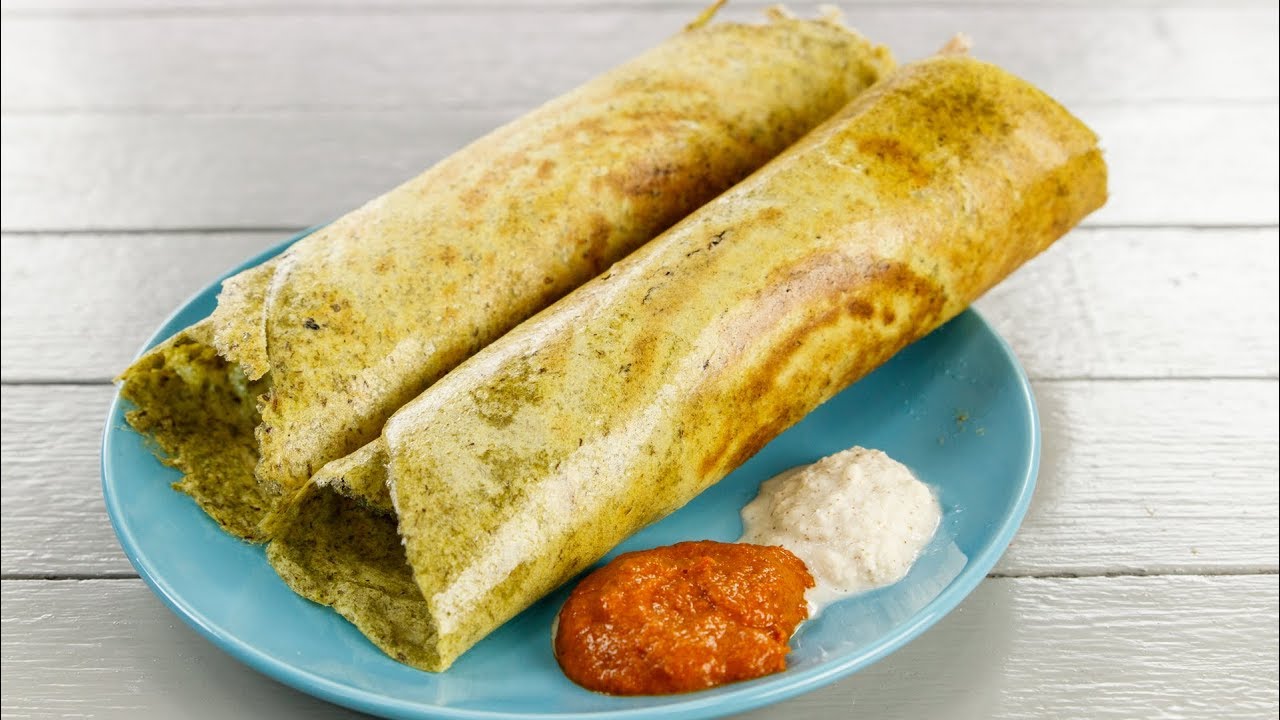
Health Benefits of Pesarattu
Pesarattu is not just a delicious treat; it’s also a powerhouse of nutrition. The primary ingredient, green gram, is known for its high protein content, making it an excellent choice for vegetarians and those seeking to increase their protein intake. Additionally, green gram is rich in fiber, which aids in digestion and helps maintain a healthy gut. This fiber content also keeps you feeling full for longer, making Green Gram Crepe a great option for those watching their weight.
In addition to protein and fiber, green gram contains essential vitamins and minerals such as magnesium, potassium, and folate. These nutrients play vital roles in supporting overall health, from maintaining cardiovascular health to promoting bone strength. The inclusion of spices like ginger and green chilies not only enhances the flavor but also contributes to the dish’s health benefits, with ginger known for its anti-inflammatory properties and chilies for their metabolism-boosting effects.
Moreover, pesarattu is gluten-free, making it suitable for those with gluten sensitivities or celiac disease. The combination of wholesome ingredients and minimal processing makes it a nourishing choice for breakfast or any meal of the day. Enjoying Green Gram Crepe regularly can help you incorporate more plant-based proteins into your diet while savoring the rich flavors of Telugu cuisine.
Serving Suggestions and Accompaniments for Pesarattu
Pesarattu is a versatile dish that can be paired with various accompaniments, enhancing its flavor and elevating the dining experience. One of the most popular choices is ginger chutney, which adds a spicy and tangy kick that complements the earthy flavor of the crepes. The zesty notes of ginger and the slight sweetness of jaggery in the chutney create a perfect balance that excites the palate.
Another traditional accompaniment is coconut chutney, which brings a creamy and refreshing element to the meal. The subtle sweetness of coconut paired with green chilies and tempered spices creates a delightful contrast to the crispy Green Gram Crepe. This chutney not only adds flavor but also provides additional nutrition, making it a wonderful sidekick to the dish.
For those who enjoy a bit of heat, serving pesarattu with a spicy onion chutney or tomato chutney can take the experience to another level. These chutneys, made with roasted ingredients and vibrant spices, enhance the flavors and provide a delightful contrast to the mildness of the Green Gram Crepe. Whether you prefer sweet, spicy, or tangy, there’s an accompaniment to suit every taste.
Popular Pesarattu Recipes
While the basic pesarattu recipe is a favorite among many, there are several popular recipes that showcase the versatility of this dish. One such recipe is the “upma pesarattu,” where the pesarattu is stuffed with a flavorful upma filling. To make this dish, prepare the upma with semolina, vegetables, and spices, then fill the Green Gram Crepe with it before folding. This results in a hearty meal that is both satisfying and nutritious.
Another crowd-pleaser is “pesarattu with egg,” where a beaten egg is poured onto the crepe while cooking. The egg adds a rich texture and protein boost, making this version a favorite among those who enjoy eggs. The combination of crispy pesarattu and soft scrambled egg creates a delightful contrast that is hard to resist.
For a more elaborate version, consider making “paneer pesarattu.” In this recipe, crumbled paneer is mixed with spices and herbs and then stuffed into the pesarattu before it is folded and cooked. The creamy texture of paneer adds a luxurious touch, making it a perfect option for special occasions or family gatherings. Each of these recipes showcases the adaptability of pesarattu while celebrating the rich flavors of Telugu cuisine.
Tips for Making the Perfect Pesarattu
Creating the perfect pesarattu requires attention to detail, but with a few tips, you can master this dish in no time. First, ensure that you soak the green gram for at least 6-8 hours, or overnight. This step is essential for achieving a smooth batter and enhancing the digestibility of the legumes. A good soak will also help the moong dal blend more easily, resulting in a creamy texture.
When blending the batter, add water gradually to achieve the right consistency. A batter that is too thick will result in dense crepes, while a batter that is too thin may not hold together well. Aim for a consistency similar to pancake batter—thick enough to hold its shape but pourable enough to spread easily on the skillet.
Lastly, don’t rush the cooking process. Cooking the pesarattu on medium heat allows the crepes to develop a crispy texture while cooking through evenly. Be patient when flipping the crepes; the edges should lift easily when they are ready. Serve them hot with your favorite accompaniments for the best experience. With these tips, you’ll be well on your way to making delicious pesarattu that will impress family and friends alike.
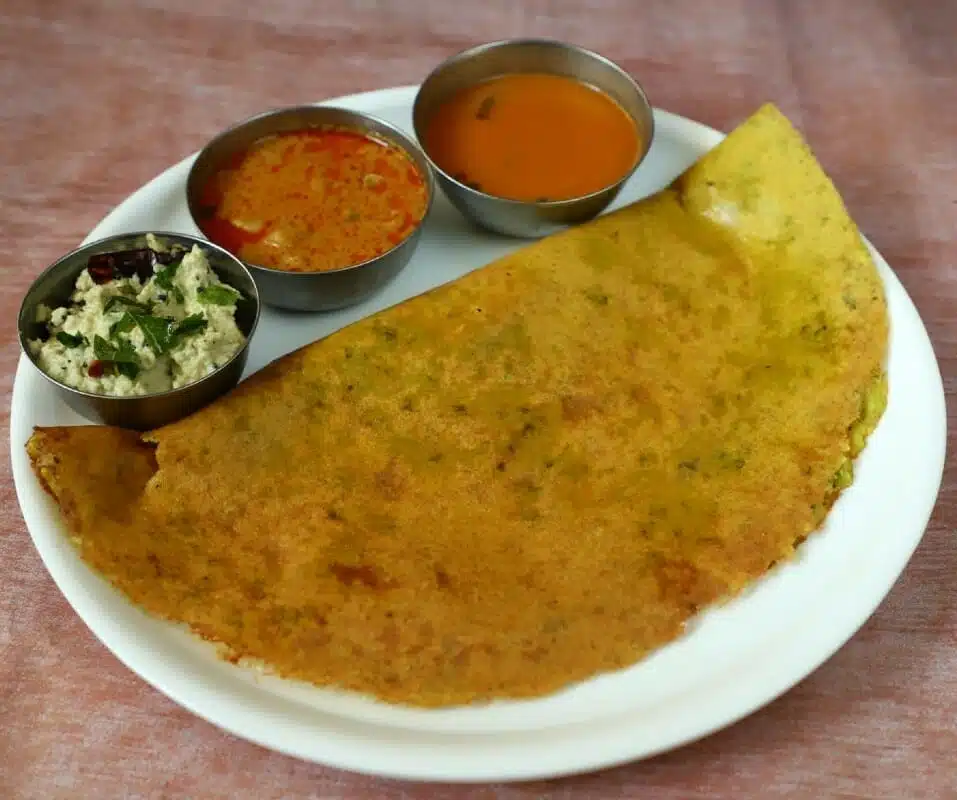
Where to Find Pesarattu in Telugu Cuisine
Pesarattu can be found in various settings, from traditional family kitchens to bustling street food stalls. In Andhra Pradesh and Telangana, it is a common breakfast item, often prepared in homes and served to guests as a symbol of hospitality. Many local eateries and restaurants specialize in authentic Telugu cuisine, featuring pesarattu as a highlight on their menus.
Street food vendors also offer pesarattu, often with innovative twists and creative accompaniments. These vendors can be found in markets, near colleges, and at food festivals, providing a quick and delicious option for those on the go. The atmosphere of street food stalls adds to the experience, with the aroma of freshly cooked pesarattu wafting through the air, enticing passersby to indulge.
For those looking to enjoy pesarattu beyond the borders of its native regions, many Indian restaurants across the globe have incorporated this dish into their menus. Visiting these establishments offers a chance to experience the flavors of Telugu cuisine, even if you’re far from home. Whether you’re in a local diner or a high-end restaurant, ordering pesarattu is a delightful way to connect with the culinary heritage of Andhra Pradesh and Telangana.
Conclusion and Final Thoughts on Pesarattu
Pesarattu is more than just a dish; it’s a celebration of the rich culinary traditions of Telugu cuisine. From its historical roots to its modern adaptations, this green gram delight has secured its place as a beloved staple in many households. The combination of nutritious ingredients, vibrant flavors, and cultural significance makes pesarattu a dish worth exploring and cherishing. If you like reading this article, then please consider visiting dansartain to find more article like this.

